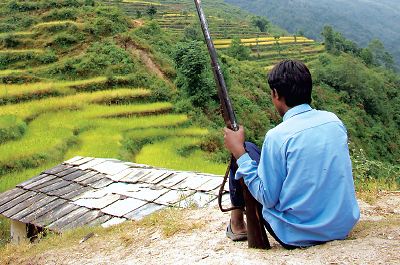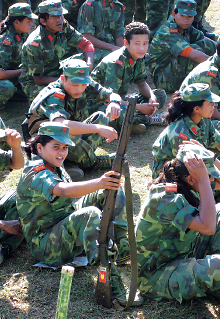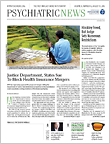The context may differ but recovery from trauma may follow similar trajectories in very different cultures, as Brandon Kohrt, M.D., Ph.D., and colleagues discovered in an extended study of former child soldiers who fought in Nepal’s decade-long civil war.
Kohrt, an assistant professor of psychiatry, global health, and cultural anthropology at Duke University and the Duke Global Health Institute in Durham, North Carolina, began working with the young people in 2006 as part of his doctoral dissertation in anthropology. Eventually, UNICEF asked him to evaluate how traditional rituals could reintegrate 10,000 child soldiers into Nepalese society.
Those rituals included getting the young people back into the routines of home, school, and community. Over a year-long intervention, Kohrt and his colleagues observed a “dramatic” improvement in symptoms of depression and posttraumatic stress, as well as general functioning.
Five years later, in 2012, a grant from HopeLab Foundation in California gave Kohrt a chance to go back to study the long-term effects on the former child soldiers.
“We saw that for some, the benefits of the intervention had been retained, but for others, the symptoms of PTSD and depression had begun to creep upward, especially among the former girl child soldiers,” said Kohrt in an interview.
Kohrt and his colleagues also wanted to look at biological markers of trauma and resilience and so formed a partnership with Steven Cole, Ph.D., a professor of medicine and psychiatry and biobehavioral sciences at the UCLA School of Medicine and vice president of research and development at HopeLab. With Cole’s assistance, Kohrt’s team in Nepal collected dried blood samples to look at gene activation for immune functioning. Their target, “conserved transcriptional response to adversity” (CTRA), represents an “increased expression of proinflammatory genes and reduced expression of antiviral genes in circulating immune cells,” linked to “adverse social conditions early in life.”
They compared this biological information with responses to a shortened version of Wagnild and Young’s Resilience Scale, a test used in Western countries.
“We found a surprisingly strong association with the biological marker, despite very different forms of social structure, religion, and different child development practices,” he said.
In fact, one of the goals of Kohrt’s research was to test whether concepts of resilience found in Western, educated, industrialized, rich, and democratic (that is, “WEIRD”) cultures—and used in such questionnaires—applied elsewhere in the world.
“These results suggest that CTRA responses to early life social adversity may represent a relatively broad human potential that can be observed in non-WEIRD populations,” wrote Kohrt and colleagues in an article in the July 19 Proceedings of the National Academies of Science.
They also found that CTRA gene expression was upregulated in former child soldiers, especially those with PTSD. But among the former soldiers with both PTSD and high resilience scores, CTRA gene expression was as low as it was among civilian youth who did not have PTSD.
“Resilience is not just the flip side of PTSD, and having symptoms of PTSD does not mean someone cannot be resilient,” said Kohrt. People who have experienced trauma can thus still have a dramatic improvement in their quality of life and self-efficacy.
“This allows us to rethink some of the interventions for PTSD even when we can’t do exposure-based therapy,” he said. “Promoting resilience, rather than just focusing on PTSD symptom reduction, may have benefits for health.”
The research was supported by the HopeLab Foundation and the National Institutes of Health. ■
“Psychological Resilience and the Gene Regulatory Impact of Posttraumatic Stress in Nepali Child Soldiers” can be accessed
here.


